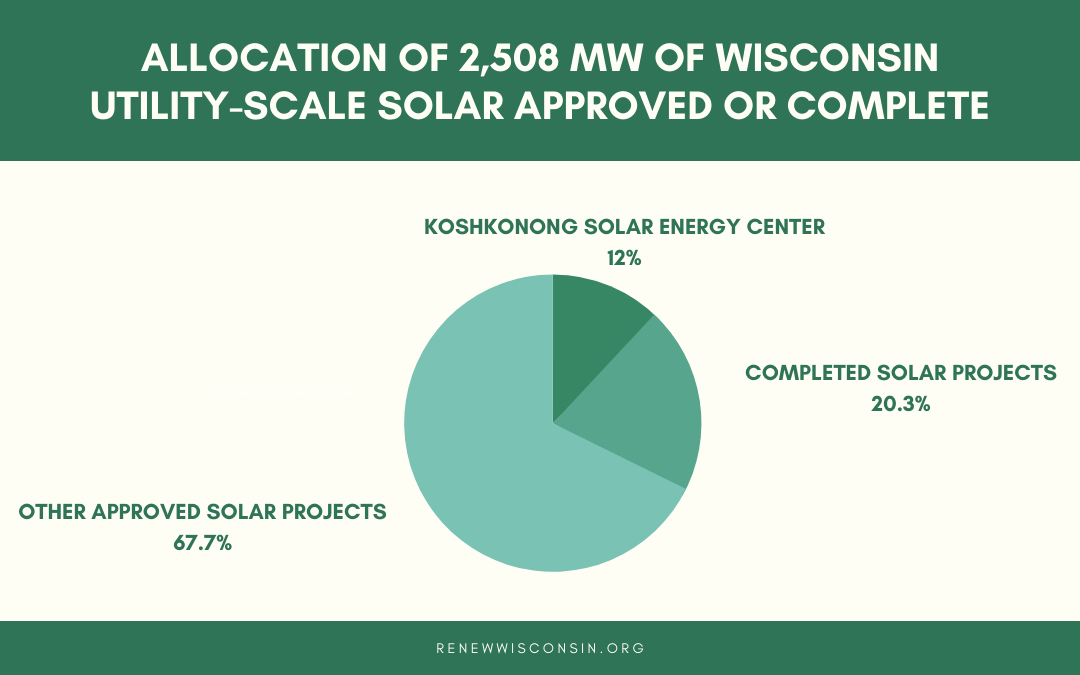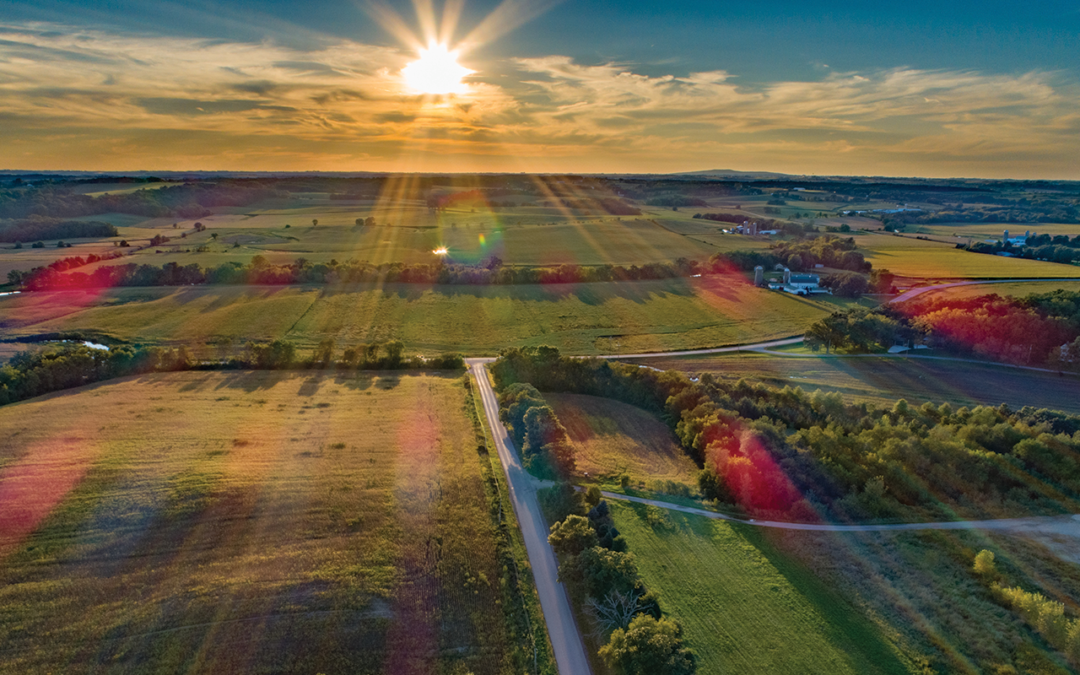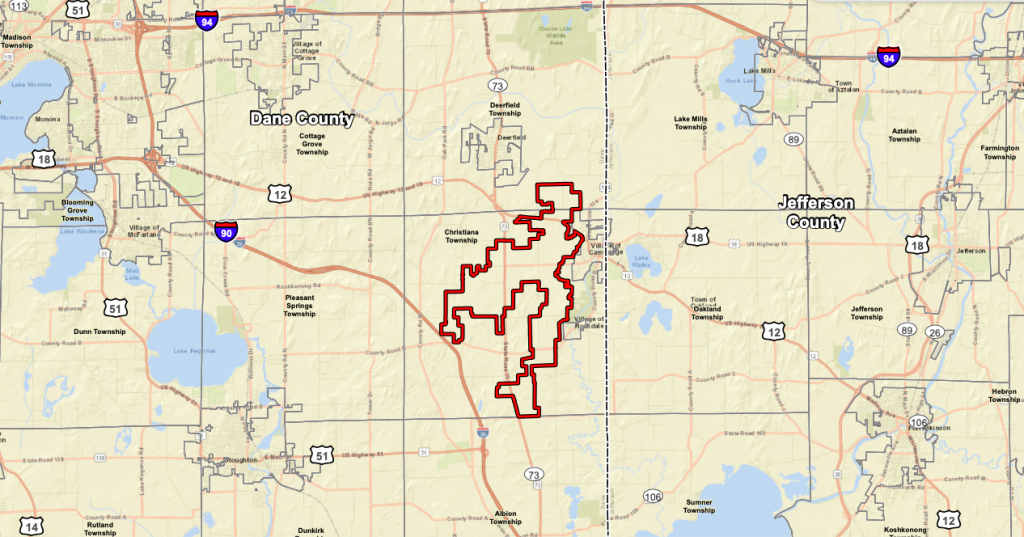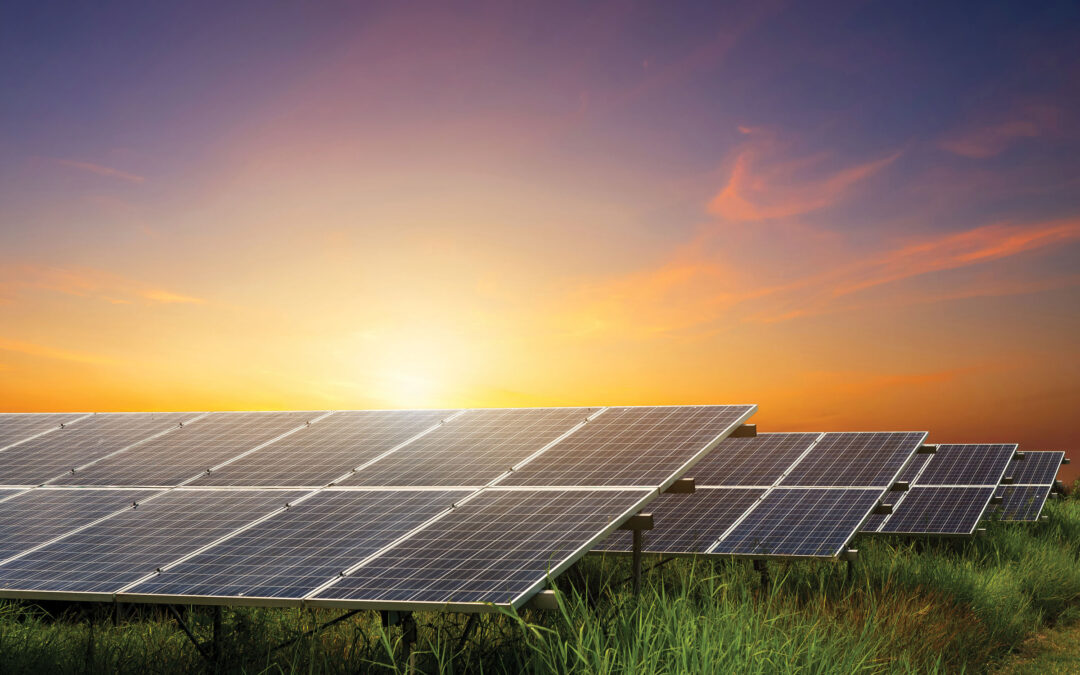


Koshkonong Solar Energy Center needs your support!
The proposed Koshkonong Solar Energy Center would be located in southeast Dane County upstream of the Rock River. The centerpiece would be a 300-megawatt solar power generation facility anticipated to begin producing energy in 2024. Koshkonong Solar will also include a 165-megawatt battery storage component to help bolster grid reliability.
As Wisconsin continues to retire coal-fired power plants it is vital to replace those fossil fuel electricity generators with emission-free renewable energy. For example, the Columbia Energy Center, located just south of Portage, is now slated for a 2024 retirement.
Koshkonong Solar Energy Center needs vocal public support to get approved and help shift Wisconsin to clean energy. Voice your support for local solar energy by submitting a short comment today to the Public Service Commission (PSC) of Wisconsin.

Project to be located in southeast Dane County
Koshkonong Solar would advance the clean energy goals of Dane County, its local municipalities, and residents, and the State of Wisconsin. Koshkonong Solar will generate enough emissions-free electricity to power 60,000 average American homes or just about ¼ of the 240,000 households in Dane County. The project also represents exactly ¼ of the amount of solar capacity Dane County called for in its Climate Action Plan. This single project would also bring an estimated $200 million of investment including lease payments to local landowners and new revenue streams to local governments. Local governments in the project area will receive $1.2 million per year for the life of the project based on Wisconsin’s utility aid fund formula.
The developer for this project is Invenergy, which has successfully permitted other large solar farms in Wisconsin (Badger Hollow, Paris). Koshkonong, like Invenergy’s other projects, is slated to be acquired by Wisconsin utilities, including Madison Gas and Electric.
Air Quality and Carbon Emission Reduction Benefits
Koshkonong Solar will reduce CO2 emissions by between 15 and 20 million tons over its 30-year life, along with reductions in other forms of air pollution such as 12,000 tons of nitrogen oxides (NOx), 12,000 tons of sulfur dioxide (SO2), and 804 tons of particulate matter (PM2.5).
Click here for the Koshkonong Emissions Analysis.
The emissions reductions from the estimated 600,000 megawatt-hours of energy production for the project are equivalent to the carbon sequestered by 7 million tree seedlings grown for 10 years, or the avoided CO2 emissions from 2,345 railcars worth of coal burned. See other comparisons at the EPA greenhouse gas equivalency calculator.
Soil Retention and Water Quality Benefits
Koshkonong Solar will establish deep-rooted prairie vegetation amidst the arrays. This type of vegetation will increase infiltration of the site compared with current agricultural usage by (+2.2%), reduce stormwater runoff (-60% for a 1-year 24-hour rainfall event), nitrogen outflow (-48%), phosphorus outflow (-53%), and Total Suspended Solids outflow (-87%).
These upstream water quality improvements would have a positive impact on downstream environments, and yield material benefits for watershed ecosystems, human health, and recreation. Furthermore, the prairie vegetation will help turn atmospheric carbon into organic carbon, which will be deposited and build up the soil for future agriculture. Koshkonong Solar, like other solar farms, can be returned to agricultural use after the project is completed and equipment is removed, see our solar farm FAQ to learn more.
The Public Service Commission of Wisconsin is currently reviewing the project. We are asking supporters of clean energy, conservation, and climate action to submit comments sharing their support for the project. Your support would be greatly appreciated. Your voice is crucial to move the project forward and advance the clean energy transition in Wisconsin.
Submitting a message of support is easy, simply click on the link below, fill out the form, and click ‘file’. The last day to submit letters of support is July 3rd.
Click here to submit a comment in support of Koshkonong Solar!
Weighing in today will have a tremendous impact on Wisconsin’s ability to transition to clean emission-free renewable energy! Your voice matters!
Interested in learning more?
Find answers to frequently asked questions about solar farms here.
How much agricultural land would it take to power our state with solar energy? RENEW has calculated that it would take less than half a percent of Wisconsin’s total land to supply half our state’s electricity from solar. This is approximately the same amount that is currently in Wisconsin’s Conservation Reserve Program.
RENEW’s factsheet solar and agricultural land use.
2022 Annual Report
2022 ANNUAL REPORT LEADING THE TRANSFORMATION TO WISCONSIN’S RENEWABLE ENERGY FUTURE THROUGH ADVOCACY, EDUCATION, AND COLLABORATION. DONATE TO RENEW WISCONSIN Thank you!Thank you for your support of RENEW Wisconsin! 2022 was a dynamic year for renewable...
Wisconsin solar farms can improve water quality
August is National Water Quality Month, a time to reflect on clean water’s vital role in our health, agriculture, and environment. Solar energy is frequently associated with cleaner air, but its benefit to Wisconsin water quality is often overlooked.
Agricultural producers are increasingly turning to solar power to reap a steady income from renewable electricity generated on their land. In addition to generating healthy economic returns for farmers, solar farming yields many positive impacts for local and global environments. Beyond reducing carbon emissions from burning fossil fuels for electricity, solar farms are vehicles for revegetating farm fields, significantly benefiting local water quality.
Solar farms on agricultural land are temporary land uses, lasting up to 30 years in most cases. During this period, the solar arrays interspersed with deep-rooted vegetation can dramatically reduce runoff that would otherwise seep into groundwater, lakes, and rivers. The equipment is removed when the solar farm is ultimately retired, and the land can return to active cultivation.
Consider the recently approved Onion River Solar project in Sheboygan County. When completed in early 2023, this 150-megawatt (MW) project should significantly reduce water pollution. Onion River’s developer, Ranger Power, plans to establish plantings compatible with grazing and pollinating around and underneath the solar arrays. During the Public Service Commission’s review of the project, Dr. Paul Mathewson, staff scientist for Clean Wisconsin, testified that replacing the existing cropping regime with mixed grasses will reduce phosphorus runoff to nearby surface waters by 85-98% in the local watershed. Over 30 years, the plantings will prevent 100,000 pounds of phosphorus from being added to the local stream network. Reducing phosphorus runoff into rivers and lakes is vital to preventing algal blooms which threaten aquatic life and recreation.
Like Onion River, the recently approved Darien Solar Energy Center, developed by Invenergy, should also improve water quality in the surrounding area. A 250-MW solar project in Walworth and Rock counties, Darien will employ a very similar approach to revegetating the impacted cropland. According to the Delavan Lake Improvement Association, Darien will revegetate approximately 2,000 acres that had been under active cultivation, which will promote more thorough drainage and inhibit the likelihood of erosion and runoff polluting nearby water resources. Additionally, the plantings will provide habitat for pollinators, enhancing biodiversity.
Invenergy’s latest proposal, the Koshkonong Solar Energy Center, envisions a 300 MW solar installation extending across 2,400 acres of active farmland in southeast Dane County, upstream of the Rock River. As with Darien, Invenergy plans to establish deep-rooted vegetation amid the arrays. According to Invenergy’s filings, the mix of prairie plants and other grasses should reduce stormwater runoff by 60%, nitrogen outflow by 48%, phosphorus outflow by 53%, and total suspended solids outflow by 87%. The Koshkonong solar farm is under review at the Public Service Commission.
While providing steady income to Wisconsin’s farmers, the Onion River, Darien, and Koshkonong solar farms will deliver significant value to Wisconsin’s environment above and beyond the electricity they will produce. Displacing coal and fossil gas generation with solar power will improve air quality and slash greenhouse gas emissions. Further, solar generation will play a critical role in mitigating water pollution in Wisconsin because these facilities temporarily replace agricultural row-cropping with deep-rooted vegetation cover over 30 years.
Find answers to frequently asked questions about solar farms here, and learn more about solar and agricultural land use here.
